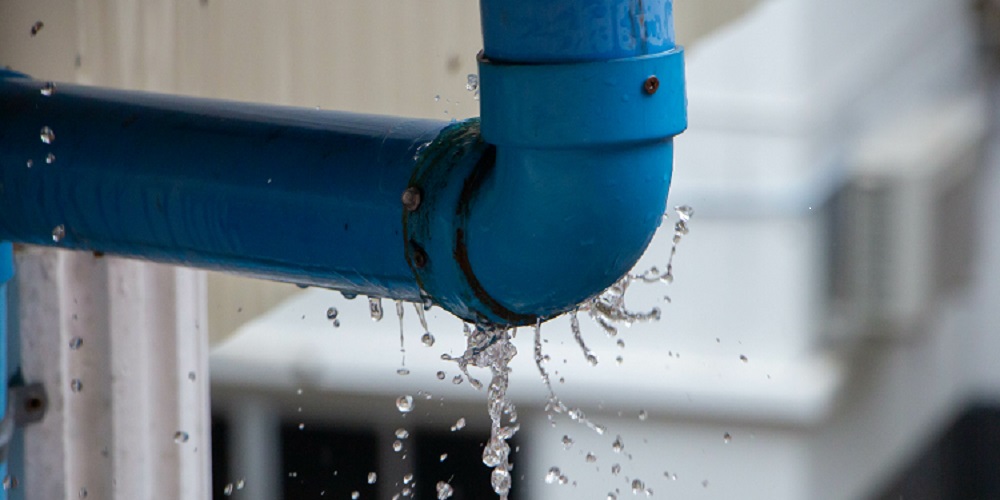We've encountered this article on Locating water leaks directly below on the web and figured it made sense to share it with you here.

Early detection of leaking water lines can mitigate a possible catastrophe. Aside from conserving you cash, it will reduce the irritation and also irritation. The moment you discover a leakage, calling your plumber for repairs is the best option. However, some small water leaks may not show up. If you can not identify it with your nude eyes, below are some hacks that aid.
1. Examine the Water Meter
Checking it is a proven means that aids you discover leaks. If it moves, that suggests a fast-moving leakage. This suggests you might have a sluggish leakage that could also be below ground.
2. Examine Water Usage
Assess your water bills and also track your water usage. As the one paying it, you must see if there are any inconsistencies. If you find sudden changes, regardless of your intake coinciding, it means that you have leaks in your plumbing system. Remember, your water expense must drop under the very same array every month. An unexpected spike in your costs shows a fast-moving leak.
A consistent rise every month, even with the exact same routines, shows you have a sluggish leak that's likewise gradually escalating. Call a plumber to thoroughly examine your residential or commercial property, particularly if you really feel a warm location on your flooring with piping underneath.
3. Do a Food Coloring Test
When it comes to water usage, 30% comes from bathrooms. If the shade somehow infiltrates your dish during that time without flushing, there's a leakage between the container and dish.
4. Asses Outside Lines
Do not forget to check your outside water lines also. Should water leak out of the connection, you have a loosened rubber gasket. One little leakage can waste loads of water as well as increase your water costs.
5. Evaluate and also Analyze the Situation
House owners need to make it a habit to check under the sink counters and even inside cabinets for any bad odor or mold growth. These two warnings show a leakage so punctual focus is called for. Doing regular assessments, also bi-annually, can conserve you from a major problem.
If you understand your residence is currently old, maintain a watchful eye on your heating systems, hose pipes, pipelines etc. Look for stainings as well as deteriorating as the majority of pipelines as well as devices have a life span. They will also naturally deteriorate as a result of tear and use. Do not wait for it to rise if you presume dripping water lines in your plumbing system. Call an expert plumber immediately so you don't wind up with an awful mess in your home.
Early detection of leaking water lines can minimize a potential calamity. Some small water leaks might not be visible. Checking it is a guaranteed way that helps you uncover leaks. One little leak can waste heaps of water and spike your water expense.
If you believe dripping water lines in your plumbing system, do not wait for it to escalate.
WARNING SIGNS OF WATER LEAKAGE BEHIND THE WALL
PERSISTENT MUSTY ODORS
As water slowly drips from a leaky pipe inside the wall, flooring and sheetrock stay damp and develop an odor similar to wet cardboard. It generates a musty smell that can help you find hidden leaks.
MOLD IN UNUSUAL AREAS
Mold usually grows in wet areas like kitchens, baths and laundry rooms. If you spot the stuff on walls or baseboards in other rooms of the house, it’s a good indicator of undetected water leaks.
STAINS THAT GROW
When mold thrives around a leaky pipe, it sometimes takes hold on the inside surface of the affected wall. A growing stain on otherwise clean sheetrock is often your sign of a hidden plumbing problem.
PEELING OR BUBBLING WALLPAPER / PAINT
This clue is easy to miss in rooms that don’t get much use. When you see wallpaper separating along seams or paint bubbling or flaking off the wall, blame sheetrock that stays wet because of an undetected leak.
BUCKLED CEILINGS AND STAINED FLOORS
If ceilings or floors in bathrooms, kitchens or laundry areas develop structural problems, don’t rule out constant damp inside the walls. Wet sheetrock can affect adjacent framing, flooring and ceilings.
https://www.servicemasterbyzaba.com/blog/how-to-detect-water-leakage-in-walls/

Hopefully you enjoyed reading our topic about Hacks to detect leaks. Thanks so much for taking time to read through our blog. So long as you liked our blog entry plz don't forget to pass it around. We love reading our article about Hacks to detect leaks.